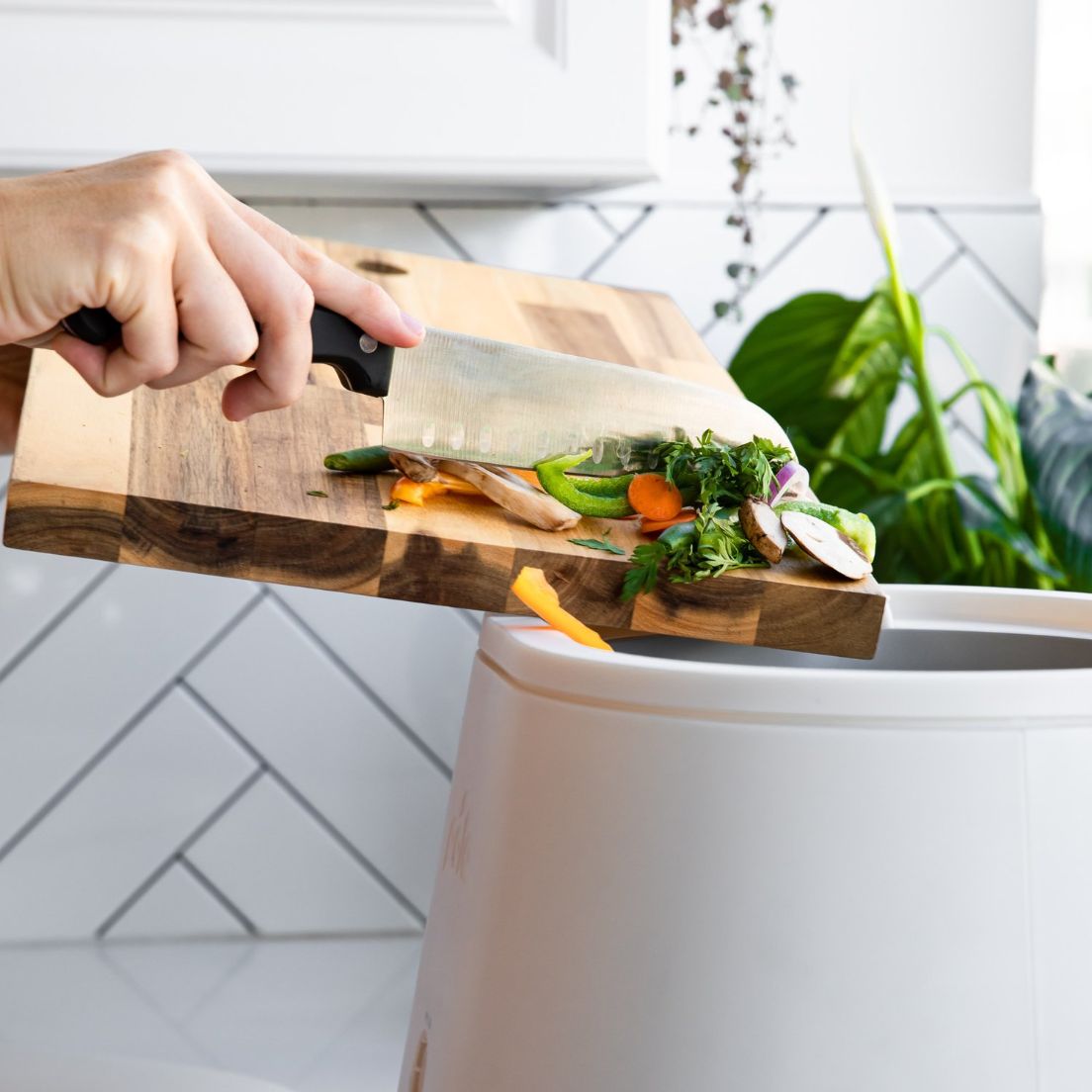
Compost is a nutrient-rich mixture of decomposed organic waste, usually plants, foods, and manure. Useful for increasing the health of soil, compost is used both by industrial farmers and home gardeners. Even people with just a few houseplants can use compost to help their plants thrive since the healthy nutrients can benefit all types of plants.
So, where should you get your compost? How much does it cost? What’s the best kind to get?
We’re answering all this and more in this quick guide to acquiring compost!
4 Main Types of Compost
There are four main types of compost: manure, multi-purpose, organic, and peat-based. Each has different uses and benefits. All four options are available on an industrial scale and can easily be purchased from gardening and supply stores. Each has its own applications, benefits, and drawbacks.
1. Manure
Manure is the preferred option for many industrial or large-scale gardening projects. The base of manure compost is animal waste matter, which is mixed with sawdust, expired feed, and/or wood shavings. Manure is a strong, effective fertilizer and it works well in almost any situation. However, it usually doesn’t smell great. The use of manure on edible plants may also have unpleasant results if the produce is not properly washed after harvesting.
2. Multi-Purpose Compost
Multi-purpose compost is one of the most widely available varieties. Most of the compost material you’ll find at your local hardware and garden store will fall into this category. This variety of compost is made from a mixture of peat, organic material, lime, and fertilizer. As the name implies, multi-purpose compost is useful in a variety of situations. Common brands of this variety include Miracle-Gro and Marshalls.
Multi-purpose compost runs cheap, but the results don’t always deliver. Simply scanning reviews often point to inconsistent quality, even within the same batch. It is not formulated for a specific plant, and it often doesn’t provide massive benefits.
3. Organic Compost
Organic compost is what most people think of when they hear “compost”. Made primarily of scraps, organic compost is easily created at home. A proper mix of materials, some monitoring, and some occasional turning results in gorgeous organic compost.
Industrially produced organic compost is also available. It functions similarly to multi-purpose compost, but the prices are often higher. The product tends to have the same functions and overall drawbacks.
4. Peat-Based Compost
Finally, peat-based compost is a longstanding fixture of the composting world. As its title implies, it’s mostly made of peat. This compost is nutrient-rich and incredible at retaining moisture. However, recent studies have suggested that peat causes environmental damage. As such, the use of peat-based compost is starting to decrease.
Compost Buying Tips

When you’re looking to buy compost, your main considerations should be the types of plants you plan to grow and how much space you have.
If you’re looking to get the most for your money, you want to be able to inspect the product. Check the information that is usually printed on the back of each bag. This will tell you the chemical composition of a compost mix. If you’re purchasing soil that already has compost mixed in, you’ll find additional information about the composition of the soil here. Finally, if you can, feel the texture; good compost should be debris-free and have a soft, fluffy texture.
You can also buy soil that has been prepared with compost. In some cases, particularly in large stores like Home Depot, what you see is what you get. Some local stores, however, will let you mix and match your own soil. By doing this, you can fully customize the compost to soil ratio.
Where to Buy Compost
Compost is commonly found at hardware and gardening stores. Both small, locally-owned outlets and massive chains will carry some form of compost. You can also purchase compost online. However, due to the nature of the product, this is not recommended; any compost purchased online cannot be properly inspected.
For bulk buying, you’ll likely need to turn to farm supply stores. You may also find large bags at hardware chains, such as Lowes and Home Depot, though the overall cost may be far more than an industrial-sized purchase from a supply store.
If you want to save some money, you can join the growing number of people who are making their own compost or fertilizer at home.
How To Make Your Own Compost

Creating compost at home is surprisingly simple. By using your own food scraps, you can reduce your carbon footprint and save money. You’ll also be able to skip going to Lowes to replenish your supply.
Backyard Composting
The traditional way of creating compost is to set up a dedicated backyard area. This may be an informal heap of compostable materials, or you can purchase a large composting bin. Backyard composting takes up a great deal of space and is a rather slow process.
Vermicomposting
For smaller spaces, vermicomposting relies on worms to speed up the process. Though speedier, vermicomposting still takes some time to produce proper compost. It also requires you to maintain a bin of wriggly worms in your house! If done incorrectly, vermicomposting will also result in a soupy, smelly mess.
The Best Compost Alternative: Lomi Food Recycler
A new and innovative way to create natural fertilizer is by using the Lomi countertop food recycler. This handy unit is small, visually appealing, and portable. Anyone can use a Lomi to turn their scraps into a useful soil amendment for their garden. It requires only a small amount of space, roughly the same as a coffee maker, and the food scraps that would, otherwise, go in your trash.

Learn More About Lomi

Lomi can take your organic waste and, within about a few hours, turn it into rich, natural fertilizer. Unlike similar units, the result is pure, authentic compost, not a dehydrated block of your discarded food. This can be immediately utilized and mixed into your soil to boost the revitalize the soil
How Fast Does Lomi Work?
Speed is one of Lomi's most appealing features. Where many countertop food recyclers take upwards of a day to create a sludgy mess, Lomi produces fully usable Lomi Earth in just a few hours. Lomi’s food recycling cycles are:
- Eco Express cycle takes 3-5 hours. A perfect way to kick off the decomposition process.
- The Grow cycle takes 16-24 hours. When the cycle is complete, you will have microbially rich soil-like fertilizer that is ready for use.
It's important to note that processing times may vary. Certain items break down more quickly than others. Lomi breaks down certain materials more easily than others. The Lomi Earth from either cycle can be mixed into soil and added to your garden.
TL;DR
Composting can be confusing, and just buying the stuff can be a headache. There are a variety of brands and types, each of which tends to have a specialized use. Otherwise, you tend to gamble on inconsistent quality by buying low-priced bargain fertilizers that might help.
Making your own compost traditionally tends to be messy, smelly, or space- and time-consuming. Traditional compost heaps require frequent maintenance, monitoring, and turning to efficiently produce. If you’re frequently busy, this is not an ideal setup.
Likewise, many modern solutions, such as turning compost bins, may promise fast results, but they still take months to produce a single cup of useful compost. In addition to their bulkiness and lack of visual appeal, these low-tech solutions often require you to leave food waste sitting inside. This can easily attract bugs, pests, and critters into your home.
If you’re looking for an alternative solution that’s perfect for the busy, chaotic nature of modern life, then look no further than Lomi. Small, subtle, and easy to use, the Lomi is an innovative way to reduce your food waste. Anyone can toss a few scraps and press the button, and you’ll see gorgeous, nutrient-rich results in just a few hours.
